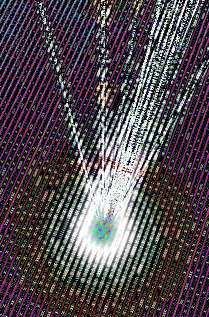Quantum checks enhanced
 Scientists have measured a mechanical quantum system without destroying it.
Scientists have measured a mechanical quantum system without destroying it.
In their quest to bring about the age of quantum computing, scientists and engineers are required to undertake ‘quantum non-demolition measurements’, in which they observe certain quantum states without destroying them in the process.
It is famously difficult to observe quantum behaviours without interrupting them, as the mere act of observation can interfere with processes.
In new research, scientists describe a promising new technique for recording quantum non-demolition measurements.
The study involved mechanical quantum systems – objects that are relatively large in quantum computing terms, but still tiny from the human perspective.
Mechanical motion (such as vibration) is used to handle the necessary quantum movements, but these can be combined with other quantum systems too.
“Our results open the door for performing even more complex quantum algorithms using mechanical systems, such as quantum error correction and multimode operations,” write the researchers in their published paper.
The experts at ETH Zürich in Switzerland put together a thin strip of high-quality sapphire, less than half a millimetre thick.
A piezoelectrical transducer was used to excite acoustic waves, moving energy units including phonons. These units can be put through quantum computing processes, in theory.
This acoustic resonator system was coupled with a superconducting qubit – a basic quantum computer building blocks that can simultaneously hold both a 1 and a 0 value.
Because the status of the superconducting qubit was made dependent on the number of phonons in the acoustic resonator, the team was able to read that number of phonons without actually interacting with them or transferring any energy.
They were then able to extract the ‘parity measure’ of the mechanical quantum system, which is crucial to correcting errors in quantum systems.
“By interfacing mechanical resonators with superconducting circuits, circuit quantum acoustodynamics can make a variety of important tools available for manipulating and measuring motional quantum states,” write the researchers.
The hybrid qubit-resonator device is expected to boost future quantum computing developments, now that it has been shown that information can be extracted from the device in a non-destructive way.
“Here we demonstrate the direct measurements of phonon number distribution and parity of non-classical mechanical states,” the researchers wrote.
“These measurements are some of the basic building blocks for constructing acoustic quantum memories and processors.”








 Print
Print